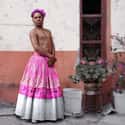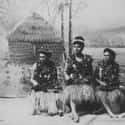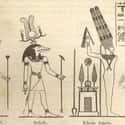-
(#4) Bissu - Indonesia
Bissu is actually the fifth gender acknowledged by Indonesians, known as a meta-gender. Bissu translates as "transvestite priest," a somewhat inaccurate translation because the term "transvestite" refers to wearing clothes of the opposite gender. Rather than cross-dressing, the bissu actually wear their own unique type of garb. They are seen as being both male and female at once, but with a twist. Indonesian culture believes a bissu who presents as outwardly male exists internally as a female, and vice versa.
Since Indonesians view bissu as conductors of spirits, the bissu often lead ceremonies or provide blessings.
-
(#8) Hijra - India
The hijras of southeast Asia belong a long and colorful history, with deep cultural ties in India. The group, which encompasses many forms of homosexual and transgender individuals, experienced ups and downs in status over the years. In the Hindu religion, the deity Shiva's bonding with his wife Parvati to form the being Ardhanari shows an ancient depiction of a hijra idol.
While once held in high esteem, the hijra lost much of their status when British colonizers criminalized the hijra way of life. However, in modern times, they have become somewhat celebrated once again, and just recently received official recognition as a third gender in India.
-
(#3) Muxe - Mexico
Muxes are a third gender originating in Oaxaca, Mexico. The word muxe said to come from the Spanish word for woman, "mujer." While muxes are usually men who identify more as women, muxes may also be those who simply don't fall into the traditional male-female or gay-straight categories (the indigenous people of the area don't actually see gender in that way). They tend to be quite skilled in arts like sewing and embroidery, and will often be the caretakers for their parents as they grow older.
Since the '70s, Oaxaca annually holds a festival in their honor called Vela de las Intrepidas, or Vigil of the Intrepids.
-
(#2) Māhū - Hawaii
In native Hawaiian culture, Māhū means someone who embodies both male and female spirits. Instead of identifying more as a male or more as a female, they accept both equally and see gender as a beautiful, flowing thing. More than just accepted in Hawaiian society, Māhūs are revered, their fluidity considered an empowering force.
Instead of viewing their "differentness" as a problem, they see their dual-spirits as a way to navigate life's challenges with grace, a true liberation.
-
(#13) Sekrata - Madagascar
In Madagascar, when young boys show effeminate traits, their families simply raise them as females. Most eventually forget they were actually born males. The people of Madagascar see this practice as a totally normal and natural part of life, particularly the Antandroy and Hova groups.
Sekrata view themselves as "real" women, wearing long hair, decorative jewelry, and silver coins in their pierced ears. It is also believed supernatural beings who protect them from any harm.
-
(#7) Sḫt (Sekhet) - Egypt
One of the oldest known examples of a third gender come from Egypt . Pottery shards from between 2000 and 1800 BCE depict three distinct genders - male, female, and sekhet , which was neither male nor female.
The drawings of the male and female characters both include anatomically correct privates, but the sekhet drawing appears to be a man with no member.
New Random Displays Display All By Ranking
About This Tool
The history of the third gender has been very long and this topic has always been extremely controversial. Since ancient times, humans have always divided gender into two different. In fact, there are more genders than we recognize or express. As early as January 2013, the Nepalese government agreed to issue a third-gender identity card, which makes life more convenient for sexual minorities in Nepal. Germany has also become the first country in Europe to recognize the third gender.
More and more countries have introduced relevant policies and laws to protect the equal rights of people with different gender perceptions, which is the next level interpretation of freedom and human rights. Here you can know more about the third gender from cultures in different countries.
Our data comes from Ranker, If you want to participate in the ranking of items displayed on this page, please click here.
















